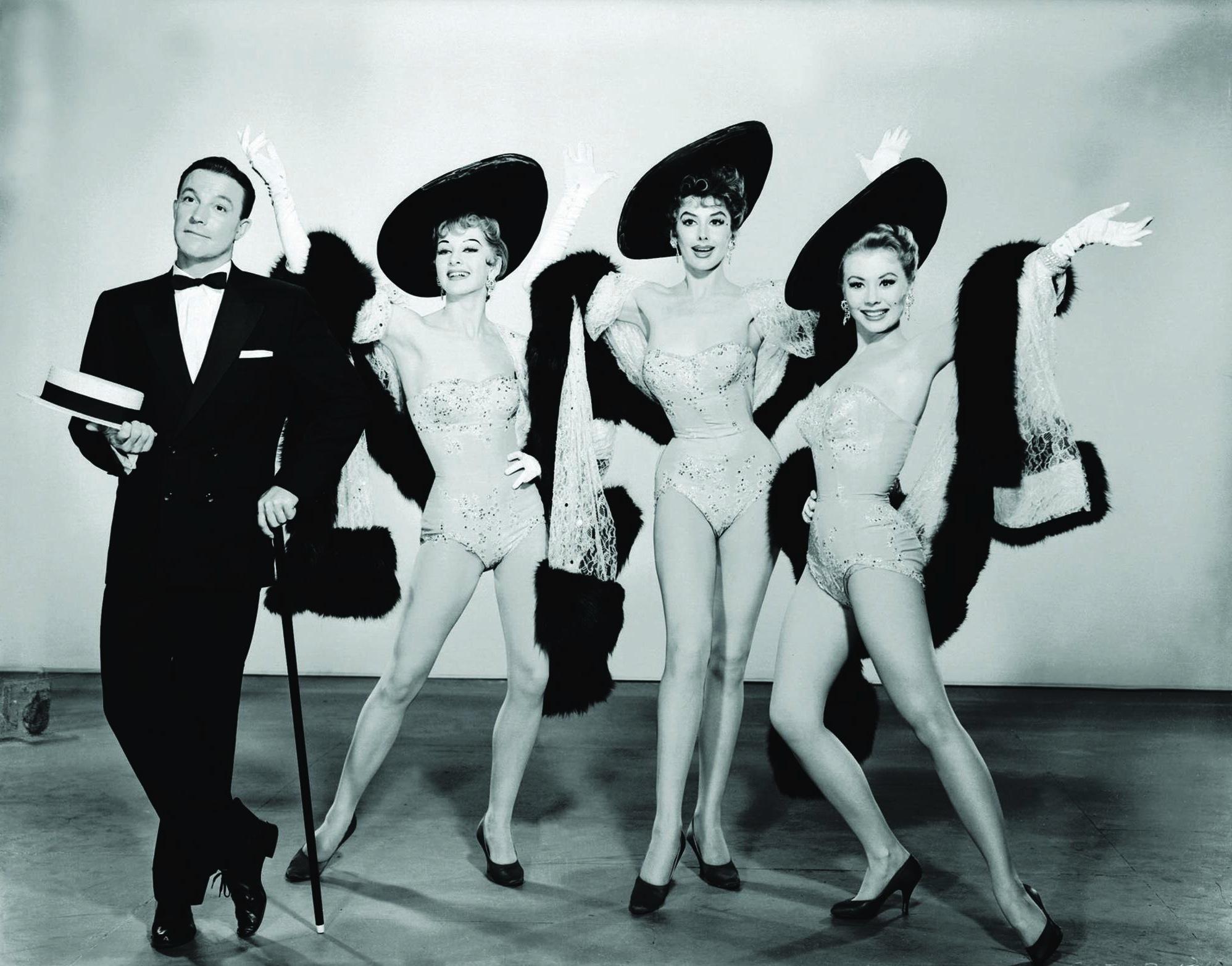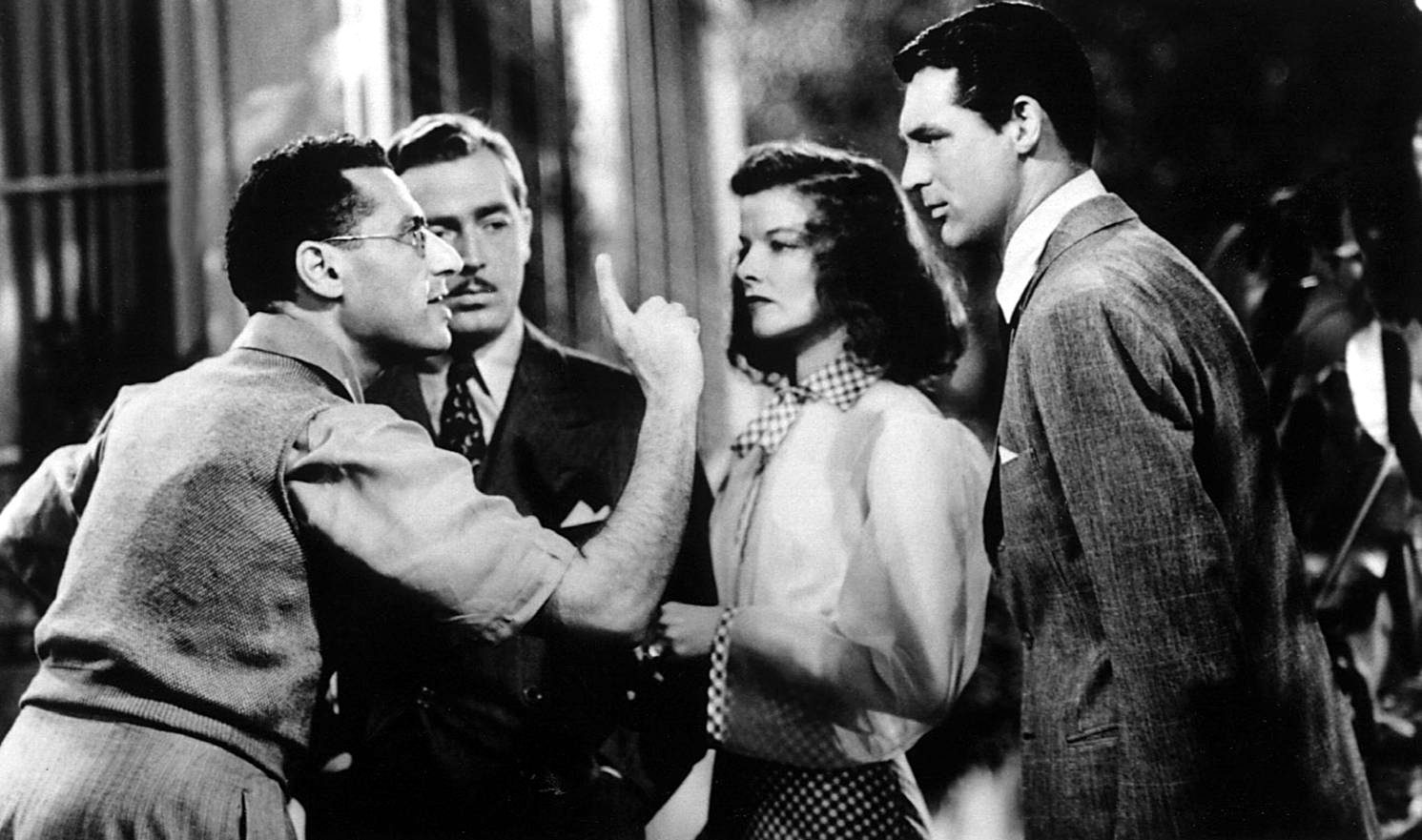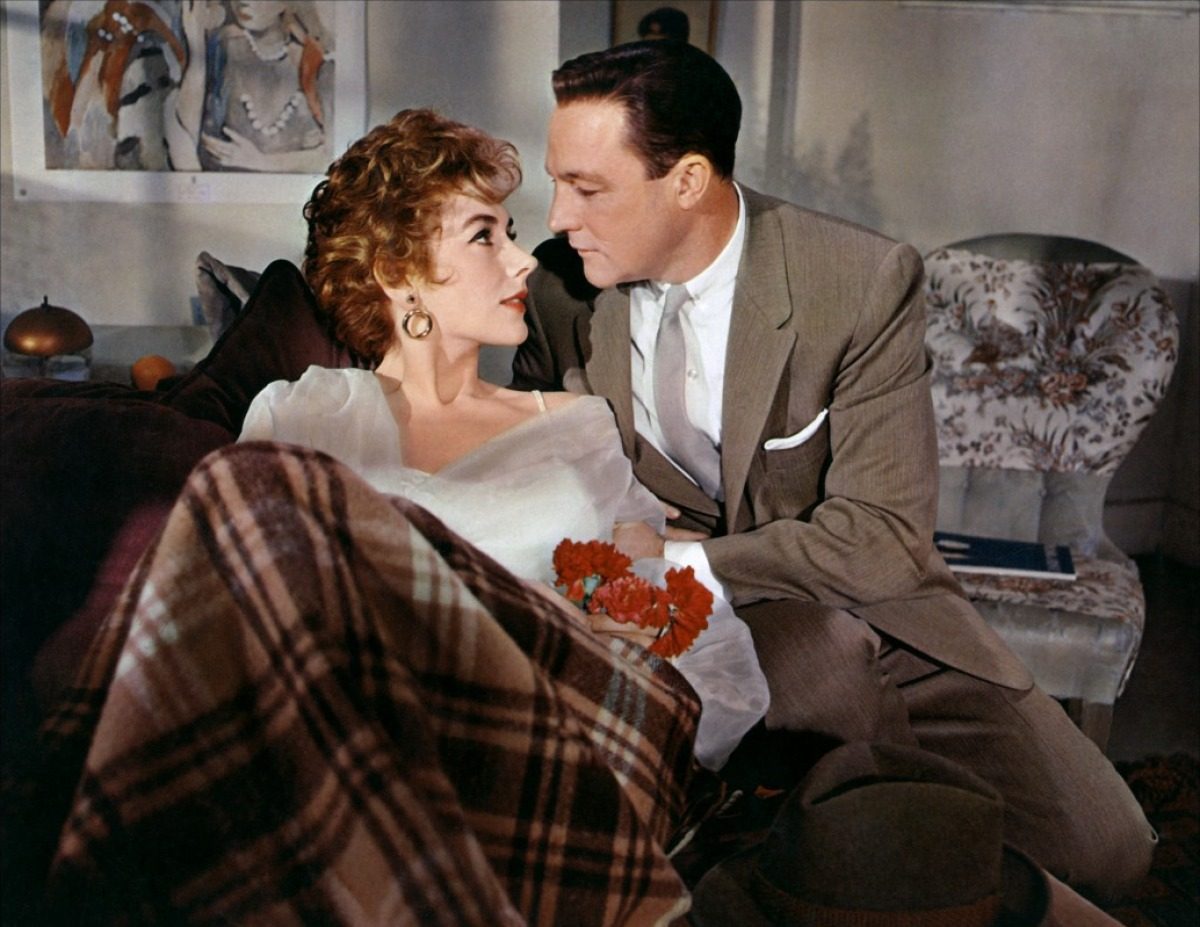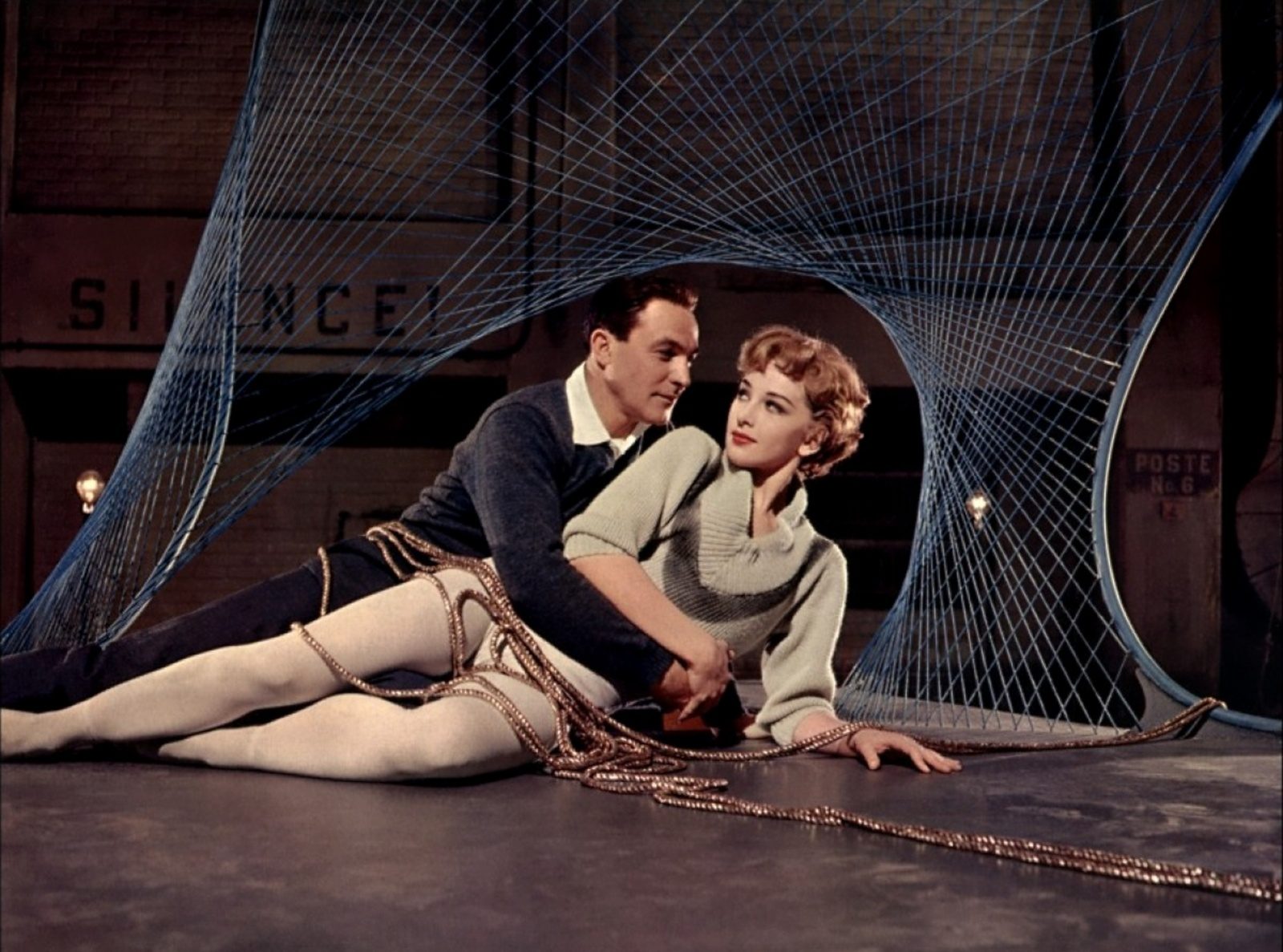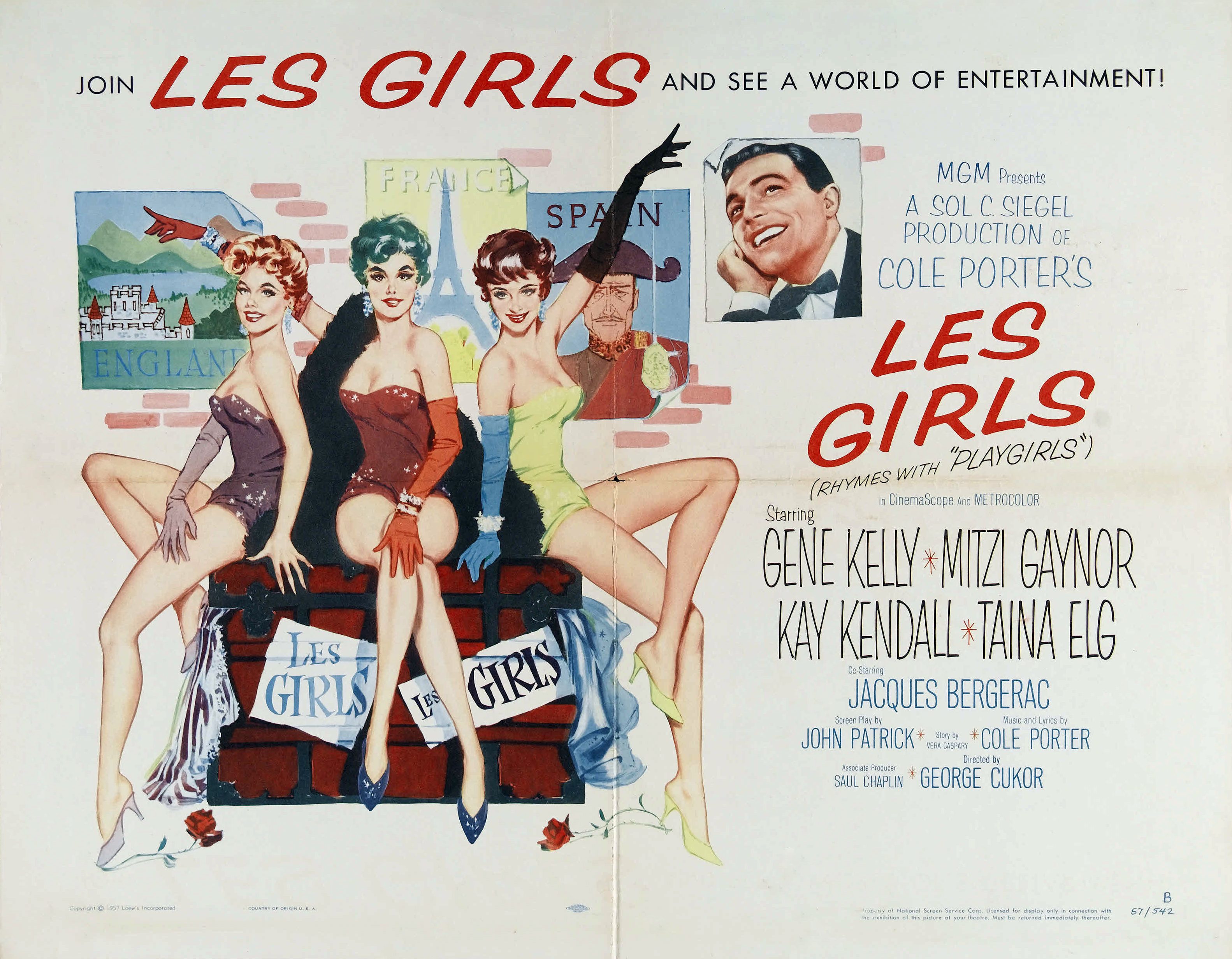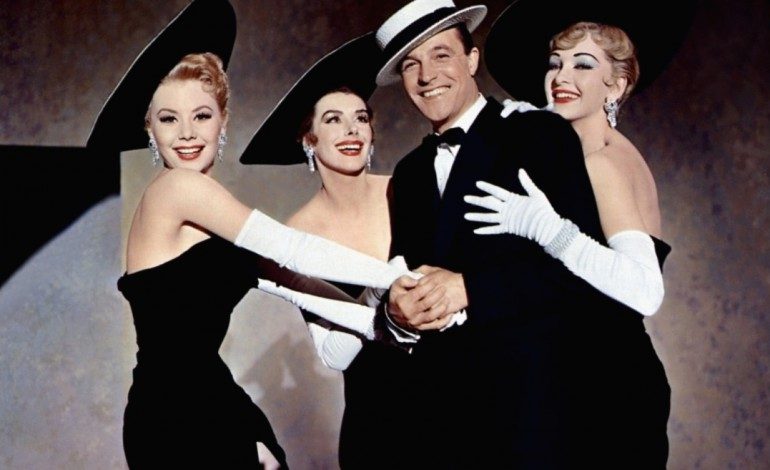

Hybrid films, productions that take two different genres and smash them together, tend to be hit-or-miss affairs, ambitious gambles on their best days. Sometimes the fevered dream pays off, as in Howard Hawks’s combination of sci-fi action and haunted house horror The Thing From Another World, and you end up with an evolutionary leap forward that broadens the possibilities of what you can do. Other times you end up pulling the wrong piece out of the Jenga tower, like when you add interstellar conflict to your Western adventure and end up with, err, Cowboys and Aliens. It’s a delicate art – requiring the mad inspiration to bring two different worlds into a collision course and the nimble balance to walk two different tight ropes at the same time.
George Cukor’s Les Girls (released in 1957) is the trial-musical film that you never even knew that you wanted. The film is an opulent MGM Musical – complete with Cole Porter songs and starring Gene Kelly no less! – but it’s also a courthouse procedural. Calling it a “mystery” is perhaps an exaggeration of the facts, but the ultimate goal of the narrative is to uncover a truth and settle a court case. It’s a production that combines film’s warmest, most ebullient, and most fantastical side with its coldest, most methodical, and most analytical tendencies. And if that sounds like something a mad scientist cooked up in a laboratory somewhere just to see if it could be done… well, hold onto that thought.
So what’s the story? Sybil Wren (Kay Kendall), a world-famous performer, has written an explosive tell-all memoir relating with lurid detail the time that she spent in a Parisian song-and-dance troupe led by Barry Nichols (Kelly). Featured heavily in the memoirs are fellow troupe members Joy Henderson (Mitzi Gaynor) and Angele Ducros (Taina Elg), with whom Sybil shared an apartment. But the equally prosperous Angele isn’t happy with the way she’s been portrayed in the book, and is suing Sybil for libel. The film takes place over the course of the trial as the court tries to ascertain what really happened. Through flashbacks, we weave in and out of the various conflicting accounts, first hearing the version that Sybil wrote, then Angele’s account of what really happened, and finally Barry’s own memories of the events in question. We see the same period from three different perspectives, getting three takes on the women, the numbers they performed in the troupe, and their relationships with the irresistible Barry.
Now, if there’s a pang of recognition buzzing around in the back of your mind don’t worry – that’s by design. In it’s own time the film was touted as the American Rashomon, and the filmmakers made deliberate use of the multiple, conflicting accounts that structured Kurosawa’s 1950 film. In a way, it’s rather emblematic of the weird crossroads upon which Les Girls was made. By 1957, television was done ironing out its early kinks and was a bona fide sensation, with runaway hits like Gunsmoke and Leave It to Beaver captivating the masses’ attention. Hollywood films languished under the final years of the Hays Code, while unrestrained European and East Asian imports (like the aforementioned Rashomon) found all sorts of formal and narrative ways to push the postmodernist envelope. New technologies like widescreen were promising, but also unwieldy and untamed. In short, the studio system was under pressure from all fronts.
This is even reflected a bit in the film’s talent roster, full of old school titans that were about to enter their twilight years. This was the final film that Kelly made while under contract to MGM and the final film that Cole Porter wrote music for, period. Even director George Cukor is an odd choice… Cukor was one of Hollywood’s most versatile and hardworking directors, making his name in everything from screwball comedies (Philadelphia Story, Adam’s Rib) to noir thrillers (Gaslight), but he was more known for his ability to coax career-defining performances out his leading ladies than for formal pyrotechnics. It’s easy for his films to feel like they’re being driven by Katherine Hepburn, Ingrid Bergman, or Judy Garland — serving their presence was often perceived as the focus of his directing style. He was a skilled craftsman, but a much quieter cinematic presence than, say, Vincente Minnelli, Stanley Donen, or the other mavericks in the MGM stable.
The first thing that stands out about Les Girls is how neatly structured of a story it is. Sure, it may be an experiment in non-linear, subjective storytelling, but it’s still anchored in the old school principles of clarity and accessibility. As in Stanley Donen’s Two for the Road, the out-of-the-box narrative is tempered by film’s architect being more interested in clear storytelling than on thought-provoking ambiguity. The result is that the film is unusual, but still built around a series of clear signposts and guides.
Take, for instance, the fact that each of the three stories that we hear presents radically different accounts, but there’s a series of events that are repeated across each one. There’s always someone who is in love with Barry. There’s always a big musical number presented in the troupe’s theater. There’s always someone suffering from an addiction, there’s always infidelity, and there’s always a suicide attempt. The first story sets the parameters for everything that happens and then the other two riff on them. It’s not so much that the film asks you to reconcile three stories that are at odds with each other – it’s closer to getting a song that is then expanded upon by two remixes.
Fortunately, the filmmakers aim to achieve more through their central conceit than just clarity. They actually use the Rashomon conceit to enhance and play off of the film’s musicality. All three of the titular girls are in show business, but they each bring a different kind of performance to the party. Angele is a French ballerina, Sybil is a British comedienne, and Joy is an American singer. Each one dominates a third of the film (Joy doesn’t narrate her side of the story, but she is very much the dominant presence in Barry’s retelling of the story) and brings her own set of sensibilities to it.
The effect of this is that the song and dance numbers shift in scale and setting according to the teller. It’s almost like the story contains three different musical films within its flashbacks. Angele’s a ballerina, so the focus of her story’s numbers is all about the craft and technique of putting on a show, about passionate artists falling in love over the course of late-night rehearsals. Sybil’s a comedienne, so her numbers are airier, more fancy-free and ridiculous. They move out of the theater and into the character’s day-to-day life, with a happy couple breaking into song out of sheer joy. And finally, once big Gene takes the reigns of the film, the musicality begins to run away from the narrative. There’s only one big number in his third of the film, but it’s a show stopping, Technicolor, ballet extravaganza that seems to expand and compress the dimensions of space as it roars on. Each section covers the same ground with its own flair, and each one is isolated and bookended by the trial scenes. You get a vintage backstage musical a la 42nd Street, you get something almost out of the Astaire-Rogers catalogue, and you get a Gene Kelly explosion of impressionistic ballet.
That’s where having someone as chameleonic as George Cukor behind the wheel really pays off. A bravura director like a Minnelli or a Busby Berkeley might seem the intuitive choice to handle such a narrative experiment, but in a way those directors might not have been as stylistically nimble as this task would have required them to be. True to form, Cukor serves his actors first and foremost, allowing Gaynor, Kendall, Elg, and Kelly to steer the film’s aesthetics and sensibilities to and fro. There is a sense in the early sections that Kelly is, perhaps, being underused, stuck acting as straight man to Elg’s histrionics or as comedic foil to Kendall, but once the film cuts him free of his leash in the third act the effect is all the more dramatic. In another film his prolonged ballet number might seem a tad overlong, but placed in this particular setting it comes across as the character, the actor, and the musical sensibility leering over everyone else involved in the production and shouting, “This is how it’s done!”
But the true masterstroke of the film isn’t the way it pits musical styles against each other, but rather the way it uses the musical genre to comment on the conventions of the trial film. This is the sneaky way that Les Girls builds itself up to a perfectly tied ribbon finish. It begins by sectioning off its narrative into clear layers: “Up here in the trial people are going to be telling the truth, one layer down in the flashback they’re just going to be living their lives, and within those flashbacks there are going to be moments of totally fake and artificial performance.”
It’s a clearly labeled pattern… that the film then spends its entire two-hour running time subverting. Each of the flashback stories is filled with all manner of lies, trickery, roleplaying, and deception, with various characters lying about who they’re with, when they’re with them, and why they have to hide it. It’s a less obvious form of enactment – it’s not labeled in such a glaring way – but it’s no less fake. And at the end of the film, once you’ve heard three versions of the same story and realized that at least part of each one was a lie, you finally understand that the characters were doing the same thing they were in the musical numbers: performing. That’s the operational conceit that lets Les Girls work as a genre hybrid: the inspired idea of equating the musical numbers and the trial, of treating them as two separate but equal sides of the same coin.
Is Les Girls a perfect film? Sadly, the answer is no. The songs, though still Cole Porter numbers, are not among the composer’s greatest. The only two standouts are Kelly’s opulent ballet sequence and the comedy duet “You’re Just Too, Too.” All the other numbers are passable, and together add up to more than the sum of their parts, but it’s not quite the cavalcade of instant classics you get in something like An American In Paris. The bigger problem though, is that Kelly really runs away with the film in a bad way. You can really tell that the film wants the three perspectives to feel equal in weight, but Kelly is such an established institution and a musical icon that it’s hard to not feel like his take is the “official” one. All three lead actresses are talented performers, but none quite have the star power or sheer presence to go toe-to-toe with Gene. The original plan for Les Girls was to have Leslie Caron and Cyd Charisse opposite Kelly, and it’s all too easy to see how the film’s designs would unfold a bit more confidently with heavier hitters filling those roles.
Still, for all its unquestionable shortcomings Les Girls remains a fascinating case of old-school Hollywood doing its best to keep up with new school world cinema and emerging with a much more coherent and unified product than anyone would have thought possible. Director George Cukor, who would be turning 116 today, is a name that is starting to not be as recognized as it should be, even while many of his films endure as classics. A cruelly apt end for someone who all too often sublimated himself to make way for his collaborators, but Les Girls stands as a testament to the inventiveness and creativity of the man. There is an articulateness to his invisibility, and a powerful reminder that flexibility and adaptability can make as much of a cinematic statement as anything else in the arsenal.

